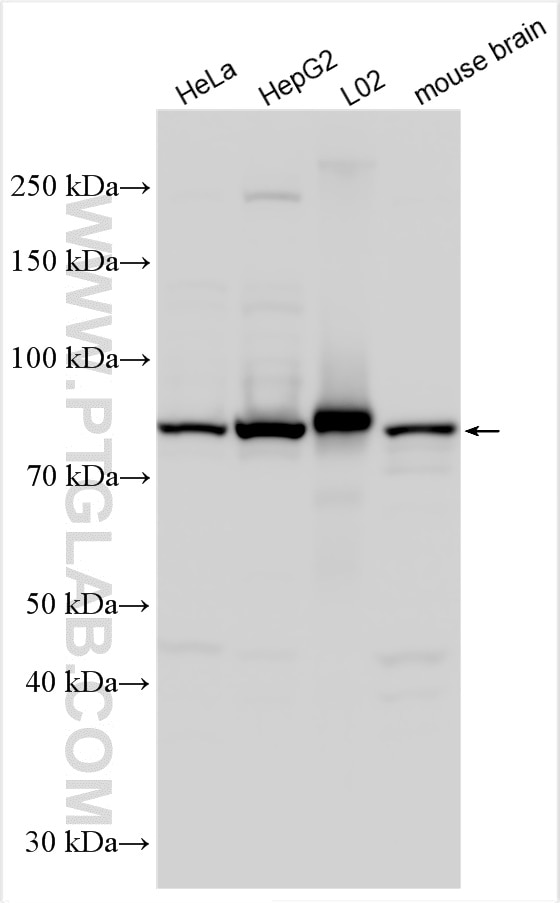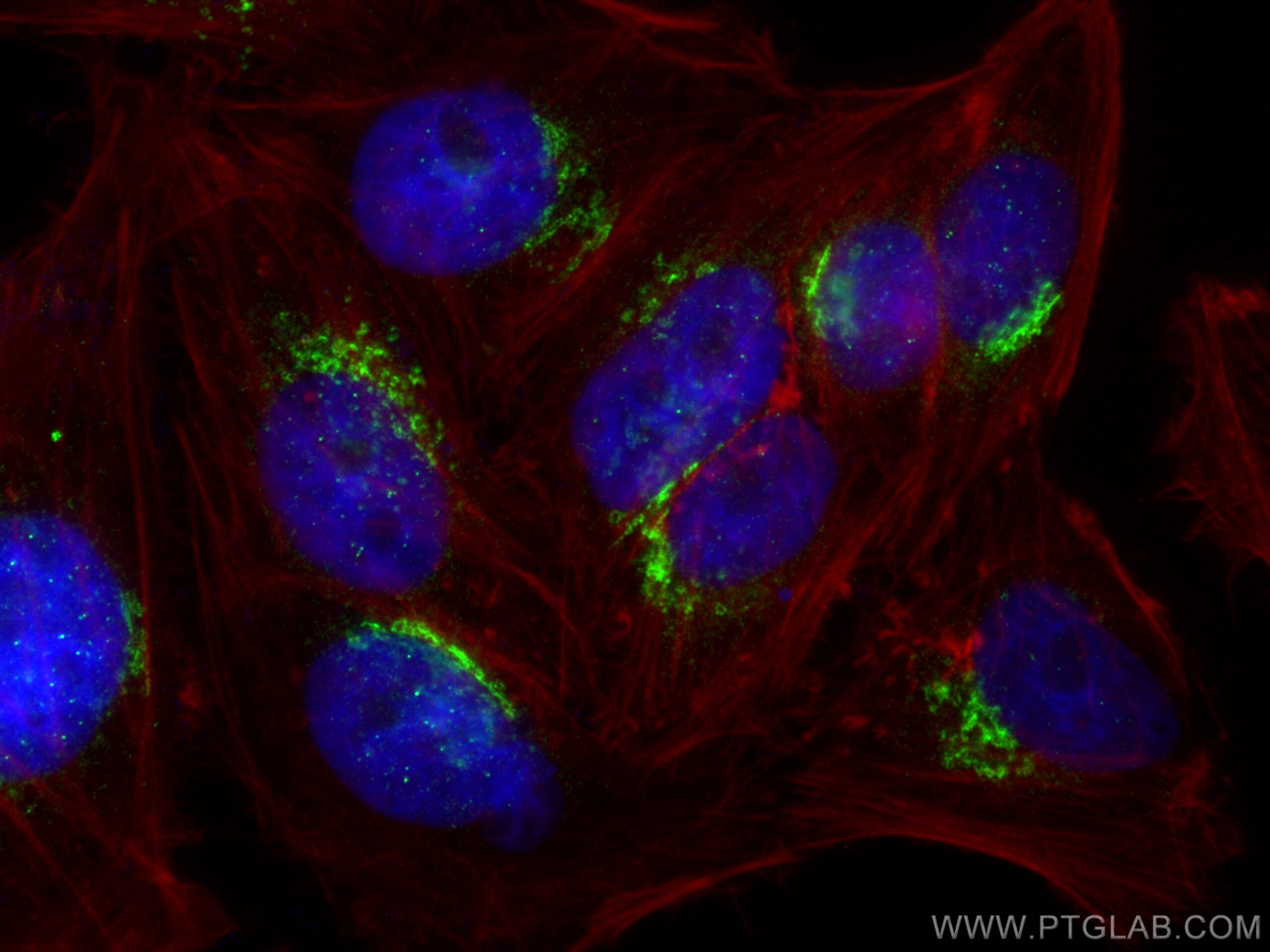Tested Applications
| Positive WB detected in | HeLa cells, HepG2 cells, L02 cells, mouse brain tissue |
| Positive IF/ICC detected in | HepG2 cells |
Recommended dilution
| Application | Dilution |
|---|---|
| Western Blot (WB) | WB : 1:1000-1:8000 |
| Immunofluorescence (IF)/ICC | IF/ICC : 1:50-1:500 |
| It is recommended that this reagent should be titrated in each testing system to obtain optimal results. | |
| Sample-dependent, Check data in validation data gallery. | |
Product Information
31164-1-AP targets GOLGA5 in WB, IF/ICC, ELISA applications and shows reactivity with human, mouse samples.
| Tested Reactivity | human, mouse |
| Host / Isotype | Rabbit / IgG |
| Class | Polyclonal |
| Type | Antibody |
| Immunogen | GOLGA5 fusion protein Ag35031 Predict reactive species |
| Full Name | golgi autoantigen, golgin subfamily a, 5 |
| Calculated Molecular Weight | 83 kDa |
| Observed Molecular Weight | 83-95 kDa |
| GenBank Accession Number | BC023021 |
| Gene Symbol | GOLGA5 |
| Gene ID (NCBI) | 9950 |
| RRID | AB_3669878 |
| Conjugate | Unconjugated |
| Form | Liquid |
| Purification Method | Antigen affinity Purification |
| UNIPROT ID | Q8TBA6 |
| Storage Buffer | PBS with 0.02% sodium azide and 50% glycerol , pH 7.3 |
| Storage Conditions | Store at -20°C. Stable for one year after shipment. Aliquoting is unnecessary for -20oC storage. 20ul sizes contain 0.1% BSA. |
Background Information
GOLGA5 (Golgin subfamily A member 5) maintains Golgi structure, and stimulates the formation of Golgi stacks and ribbons. Also, it is involved in intra-Golgi retrograde transport (PMID: 12538640; 15718469).
Protocols
| Product Specific Protocols | |
|---|---|
| WB protocol for GOLGA5 antibody 31164-1-AP | Download protocol |
| IF protocol for GOLGA5 antibody 31164-1-AP | Download protocol |
| Standard Protocols | |
|---|---|
| Click here to view our Standard Protocols |





